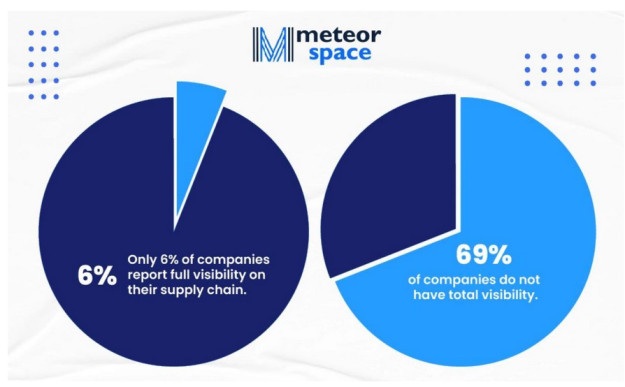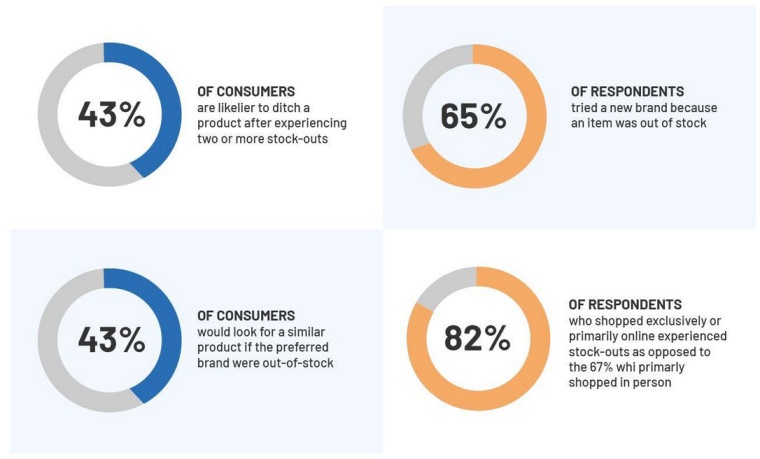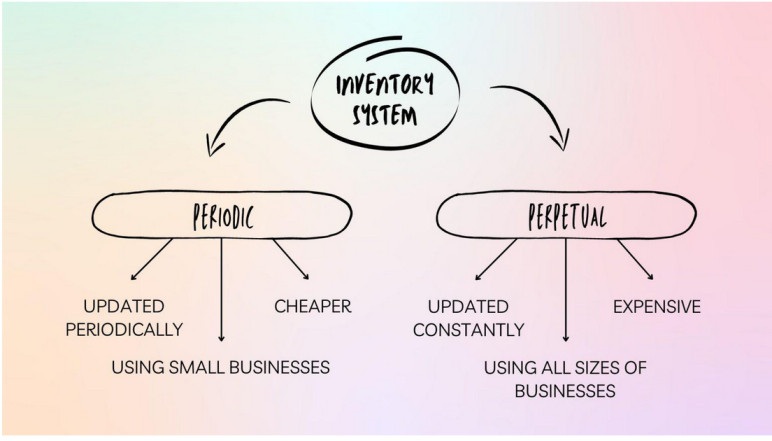What Is Perpetual Inventory? Everything You Need to Know
Get complete insights into perpetual inventory including its benefits. Learn to choose the best system, like Itefy, for real-time tracking and optimized operations.
In this article:
- Key Takeaways
- What is Perpetual Inventory?
- How Does a Perpetual Inventory System Work?
- 1. Initial Setup
- 2. Real-Time Tracking
- 3. Automated Systems
- 4. Centralized Database
- Benefits of a Perpetual Inventory System
- 1. Accuracy and Real-Time Visibility
- 2. Optimized Inventory Levels
- 3. Enhanced Operational Efficiency
- 4. Diverse Location Management
- Perpetual Inventory Vs Periodic Inventory Systems
- Choosing the Best Perpetual Inventory System
- 1. Real-Time Tracking
- 2. Automated Updates
- 3. Centralized Database
- 4. Better Reporting and Data Management
- 5. Accessibility and Collaboration
- Ready for Real-Time? Take Itefy’s Perpetual Inventory Advantage

Inventory is the lifeblood of any business and is crucial for profitability and customer satisfaction. You need to keep a vigilant eye to catch any small discrepancies, as even minor errors can lead to significant losses, stockouts, or overstocking. This vigilance is equally valuable for equipment and critical assets, where unseen issues can cause costly downtime or misplacement.
This is where a perpetual inventory system becomes extremely important. Offering real-time visibility and accuracy, it transforms how you manage your inventory and assets.
Let’s understand what perpetual inventory is, how it works, its benefits, and how to choose the best perpetual inventory system for your business.
Key Takeaways
- Definition: Perpetual inventory is a dynamic digital accounting system that eliminates all the guesswork by providing continuous, real-time tracking of all business assets.
- Benefit: Implementing a perpetual system optimizes inventory levels and enhances overall operational efficiency through automated processes.
- Periodic vs. Perpetual Inventory: Unlike periodic methods, perpetual inventory provides immediate insights crucial for adapting to market demands and making data-driven decisions.
What is Perpetual Inventory?
Perpetual inventory is an inventory management practice that continuously tracks inventory levels in real time. Every single sale, purchase, transaction, or restocking creates an automatic inventory update that shows the current quantity and value of goods on hand.
It is like a continuous ledger that eliminates the need for physical inventory checkups. Instead of updating the inventory levels at specific time periods, perpetual inventory always provides an authentic and real-time snapshot of your stocks.
Did You Know? 67% of businesses are planning to implement real-time inventory systems by 2025 to improve inventory management and fulfill customer expectations. Source: Firework
How Does a Perpetual Inventory System Work?
A perpetual inventory system is a computerized system or software that continuously updates your inventory in real time. These records may include salable goods, valuable equipment, fixed assets, and supplies, providing a comprehensive view of all business resources.
Perpetual inventory systems are most commonly used by retailers, manufacturers, wholesalers, and e-commerce businesses due to their high transaction volumes and diverse products. Let’s understand how a perpetual inventory system works:
1. Initial Setup
The process starts with an initial physical count of all existing inventory items. This initial count provides the starting point, with each item’s quantity, cost, and location precisely recorded in the inventory software. All items are assigned a unique identifier like a SKU, barcode, or RFID tag, making it digitally trackable from the outset.
2. Real-Time Tracking
A perpetual inventory system records every transaction or movement in real time. Whether an item is added to stock through a purchase, removed via a sale, or even undergoing maintenance, the system instantly updates its status.
3. Automated Systems
The real-time updates are largely supported by integrated automated systems. Point-of-sale (POS) systems and barcode scanners play a critical role. When a barcode is scanned, the system instantly deducts the item from stock to ensure accurate counts without manual intervention.
4. Centralized Database
Forget about the hassles of scattered paperwork and messy spreadsheets. A perpetual inventory system stores all relevant inventory information in a centralized database. This database provides a comprehensive, unified view of stock levels across all locations and sales channels (e.g., online, in-store, warehouse).
Crucial Reminder: The success of a perpetual inventory system heavily relies on accurate data entry. Errors or misrecorded transactions can mess up your entire inventory picture.
Benefits of a Perpetual Inventory System
Now that you know what perpetual inventory is and how it works, we shall explore its key advantages. Adopting a perpetual inventory system can truly be a game-changer for your business, offering accuracy, efficiency, and real-time control.
1. Accuracy and Real-Time Visibility
There is no place for guesswork in business; you must always know the exact quantity and value of every item in stock. Despite this, 69% of companies lack visibility into their supply chains. Perpetual inventory systems utilize automation through tools like barcodes and RFID.

Source: Nestify
This automation minimizes human error associated with manual data entry and ensures exceptionally reliable inventory records.
Real-time visibility is why a perpetual inventory system is critical for inventory shrinkage prevention. It shows actual hands-on quantities and instantly pinpoints discrepancies between recorded stock and physical count. This identification helps you detect and investigate issues like theft, damage, or administrative errors.
2. Optimized Inventory Levels
For many businesses (retailers, manufacturers, and wholesalers), stockouts can be costly. Stats show that 65% of customers will try a new brand if an item is out of stock. Real-time inventory tracking overcomes this issue by enabling accurate reorder points and automated purchases.
A perpetual inventory system provides deep insight into actual demand and current stock levels to meet customers' demands. It also prevents overstocking by avoiding the need to tie up capital in excess inventory, which significantly reduces carrying costs and improves cash flow.

Source: Zhenhub
3. Enhanced Operational Efficiency
A faster and more accurate inventory process leads to smooth business operations. Consider a logistics company using perpetual inventory software for its delivery vehicles and specialized equipment fleet. Each asset can be easily tracked for its location and usage.
This enables automated alerts for routine maintenance, minimizing unexpected breakdowns and ensuring equipment is always operational. It also prevents manual checks, reduces asset loss, and optimizes resource allocation.
4. Diverse Location Management
As the business grows and expands into new stores and warehouses, inventory management becomes more complex. A perpetual inventory system is critical for diverse location management for a single, real-time view of stock across all sites. This centralized control simplifies interlocation transfers and maintains consistent product availability efficiently across the entire network.
Perpetual Inventory Vs Periodic Inventory Systems
When it comes to managing inventory, businesses generally choose between two methods: the Perpetual Inventory System and the Periodic Inventory System. The fundamental difference lies in when and how inventory records are updated.

Source: CF Blog
As discussed, a perpetual inventory system is a software or program that provides continuous, real-time updates of inventory balances.
In contrast, a periodic inventory system is a method of tracking inventory levels by conducting physical counts at regular intervals. It usually happens at the end of an accounting period, e.g., weekly, monthly, quarterly, or annually. It is easier and less complex to set up and is widely adopted by small businesses.
| Feature | Perpetual Inventory System | Periodic Inventory System |
| Inventory Updates | Continuous in real-time | Periodic (only after a physical count) |
| Real-Time Visibility | High | Low |
| Accuracy and Control | Accurately tracks discrepancies and maintains optimal levels | Prone to stockouts/overstocking |
| Setup Cost | Higher (Software and hardware integration) | Lower (minimal technology required) |
| Best Suited For | Larger businesses, high volume, high-value items, multiple locations | Smaller businesses, low volume, low-value items |
| Shrinkage Detection | Immediate | Delayed |
| Disruption for Counts | Minimal (cycle counts, not full shutdowns) | Significant (often requires shutting down operations for a full count) |
| Financial Reporting | Real-time financial insights for balance sheet and income statements | Financial reports updated only after physical counts, limiting real-time insight |
| Best for | Startups prioritizing simplicity and minimal initial costs. |
Choosing the Best Perpetual Inventory System
When it comes to selecting a perpetual inventory system, Itefy stands out as a comprehensive solution for complete inventory asset management. It goes beyond tracking salable goods, and covers valuable equipment, fixed assets, and supplies. This allows Itefy to offer a unified, real-time view of all your business resources, ensuring you always know what you have and where it is.
To ensure your investment in Itefy aligns perfectly with your business needs and future scalability, here are some key factors to consider:
1. Real-Time Tracking
Itefy’s real-time tracking begins the moment an item is added to the system. You can instantly track its current location, condition, complete maintenance history, and even its status or last assigned user. This provides an immediate, accurate picture of every asset's journey and status.
2. Automated Updates
Itefy automatically updates you on critical inventory changes. These updates prevent sudden and unexpected empty stocks of disposables or consumables, like building materials or office supplies. You will be immediately notified when inventory reaches a lower threshold to avoid operational disruptions.
3. Centralized Database
Track, maintain, and organize your inventory from a centralized database. Let Itefy take care of all the relevant information for every item, across all locations, consolidated in one unified, accessible hub.
4. Better Reporting and Data Management
Enjoy an intuitive dashboard that provides a quick and easy overview of the most recent activity, vital statistics, and issues. This readily accessible data helps you create highly detailed asset management reports. You can analyze key metrics like asset utilization, maintenance histories, and lifecycle costs to make informed strategic decisions.
5. Accessibility and Collaboration
Beyond real-time tracking and detailed information, Itefy offers seamless accessibility. Available as a laptop, desktop, and mobile app, it ensures your team can easily manage inventory, and update asset information directly from their preferred device.
Ready for Real-Time? Take Itefy’s Perpetual Inventory Advantage
So what is a perpetual inventory system? It is not just software, but a critical need for any business aiming to thrive in 2025 and beyond. The unparalleled accuracy, real-time insights, and operational efficiency give you a competitive advantage, enabling smart decisions and resilient supply chains.
Imagine a platform that integrates all your inventory from stocks to equipment and assets. Itefy delivers this reality, providing comprehensive visibility and control. Not only does it optimize operations, but also significantly reduces costs and improves customer satisfaction.With Itefy handling the complexities of inventory management, you're free to focus purely on strategic growth and achieving unparalleled business success.
Frequently Asked Questions
-
A perpetual inventory system enhances a business’s ability to adapt to changing market demands by providing real-time insights. This allows for more accurate demand forecasting and enables businesses to quickly adjust purchasing strategies, modify reorder points, and optimize stock levels for popular items.
-
While highly beneficial, perpetual inventory systems come with challenges. The initial investment can be significantly higher due to the cost of software, hardware (scanners, POS systems), and employee training. Maintaining data accuracy is also important to avoid scanning errors and missed entries for unrecorded shrinkage.
-
A perpetual inventory system itself is neither LIFO (Last-In, First-Out) nor FIFO (First-In, First-Out). Within a perpetual system, a business can choose to apply either the FIFO, LIFO, or weighted average costing method to determine the Cost of Goods Sold (COGS) and the value of its remaining inventory.
